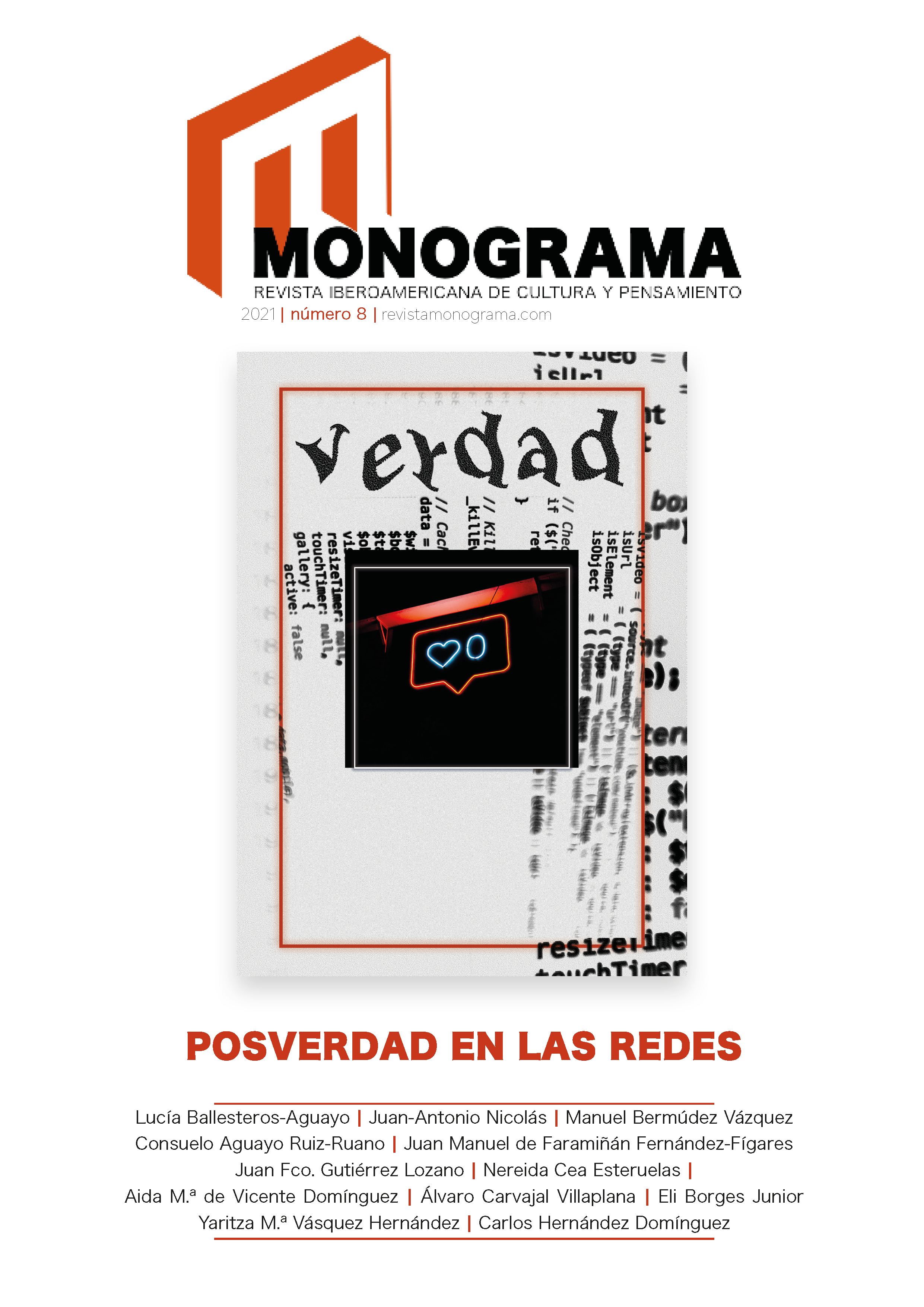Novas formas de operar o real? Algumas implicações estéticas e éticas do toque sobre imagens
DOI:
https://doi.org/10.36008/monograma.2021.08.2054Palabras clave:
imagem, gesto, ética e estética, digital, touch screenResumen
Dentre as tantas transformações físicas e culturais que advêm das novas tecnologias e do uso de seus gadgets, há uma que mais nos chama a atenção e talvez exija uma forma de análise para além dos limites da tecnofilia ou da tecnofobia: a questão dos gestos. É nesse sentido que escolhemos um determinado gesto, a partir do qual se dará nossa discussão: o «touch». Ao contrário de qualquer imagem tradicional, a imagem digital (desde as telas de celulares até os recursos de Realidade Virtual e Realidade Aumentada) é uma superfície que pode e deve ser «tocada». A partir do toque, a dinâmica e a diferença entre o distante e o próximo parecem operar com uma vivacidade incomparável em comparação a nossos outros sentidos. Embora não discutamos aqui especificamente sobre os sentidos humanos e seus limites, é interessante notar que parece haver, grosso modo, uma transformação na própria configuração pela qual os sentidos participariam desse novo modo de acessar uma imagem. Nessa linha, pretendemos nos basear principalmente em obras como a de Vilém Flusser e sua filosofia sobre os gestos, bem como nas contribuições de Giorgio Agamben e Erwin Straus. Tudo isso visa problematizar as seguintes questões: como a possibilidade de «tocar» altera nossa relação com a imagem? Em que medida isso transforma nossa experiência e contribui para a delimitação de nossa percepção do «real»? E, finalmente, quais são as implicações éticas e mesmo políticas que esse novo gesto acarretaria?
Descargas
Citas
AGAMBEN, G. (1996). Mezzi senza fine: note sulla politica [1992]. Torino: Bollati Boringhieri.
AGAMBEN, G. «Notas sobre o gesto». Tradução de Vinícius Nicastro Honesko. Artefilosofia, Ouro Preto, n.º 4, pp. 09-14, jan. 2008.
AGAMBEN, G. (2018). Karman: court traité sur l’action, la faute et le geste. Paris: Seuil.
BENJAMIN, W. (2014). A obra de arte na época de sua reprodutibilidade técnica [1936]. Segunda versão. Apresentação, tradução e notas de Francisco De Ambrosis Pinheiro Machado. Porto Alegre: Zouk.
BORGES JUNIOR, E. (2018). «Os novos gestos da política: sobre cidadania e formas estéticas de resistência na era digital». Lumina, v. 12, n.º 3, p. 74-92. doi: https://doi.org/10.34019/1981-4070.2018.v12.21571.
BORGES JUNIOR, E. (2020). The Theory of Algorithmic Form. Between an aesthetics and an ethics of algorithms: relations among image, enjoyment and action. 2020. Thesis (Doctorate in Communication Sciences), School of Communications and Arts, University of São Paulo, São Paulo.
DIDI-HUBERMAN, G. (2017). Levantes. Com ensaios de Nicole Brenez, Judith Butler, Marie-José Mondzain, Antonio Negri e Jacques Rancière. Trad. Edgard de Assis Carvalho, Eric R. R. Heneault, Jorge Bastos e Mariza Perassi Bosco. São Paulo: Edições Sesc.
FLUSSER, V. (2008). O universo das imagens técnicas: elogio da superficialidade [1985]. São Paulo: Annablume.
FLUSSER, V. (2014). Gestos [1991]. Apresentação de Gustavo Bernardo. São Paulo: Annablume.
LIPOVETSKY, G., SERROY, J. (2013). L’esthétisation du monde. Vivre à l’âge du capitalisme artiste. Paris: Gallimard.
SODRÉ, M. (2014). A ciência do comum: notas para o método comunicacional. Petrópolis: Vozes.
STRAUS, E. (2000). Du sens des sens: contribution à l’étude des fondements de la psychologie [1935]. Grenoble: Jérôme Millon.
Descargas
Publicado
Cómo citar
Número
Sección
Licencia
Derechos de autor 2021 Monograma. Revista Iberoamericana de Cultura y Pensamiento

Esta obra está bajo una licencia internacional Creative Commons Atribución-NoComercial-SinDerivadas 4.0.
Esta obra está bajo una licencia de Creative Commons Reconocimiento-NoComercial-SinObraDerivada 4.0 Internacional








